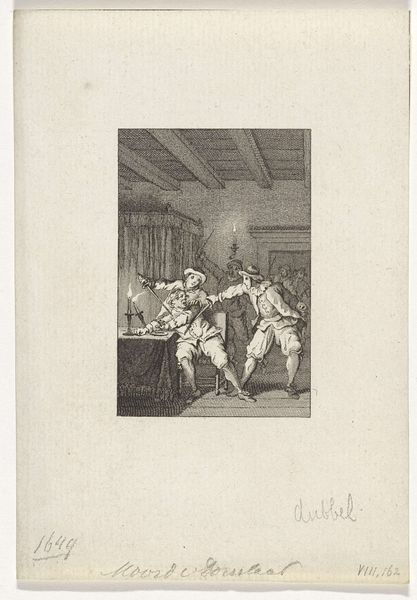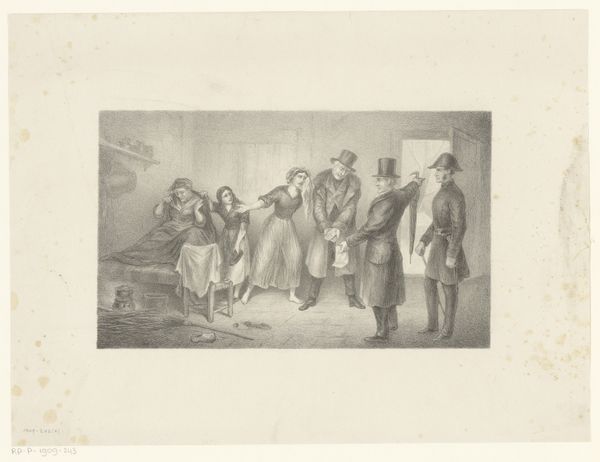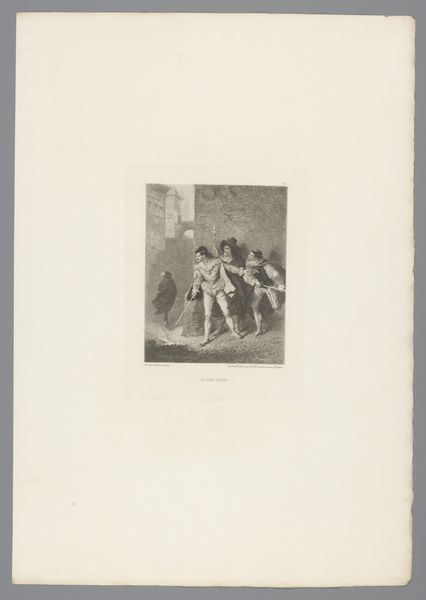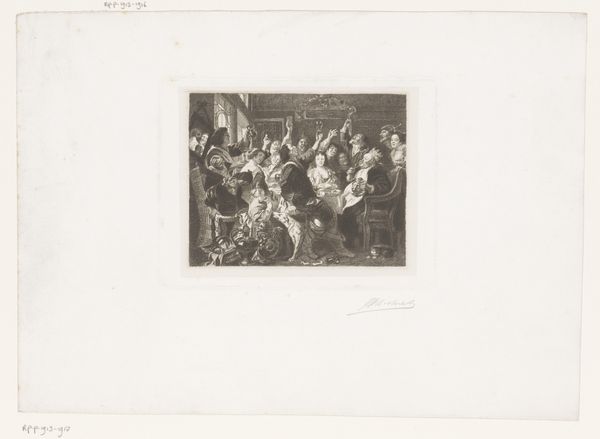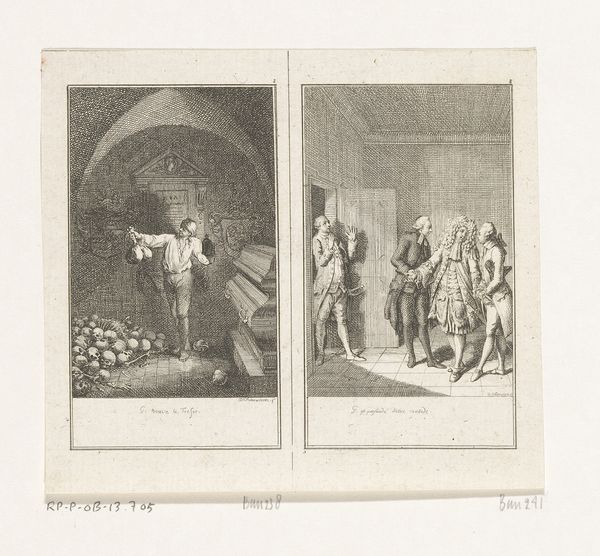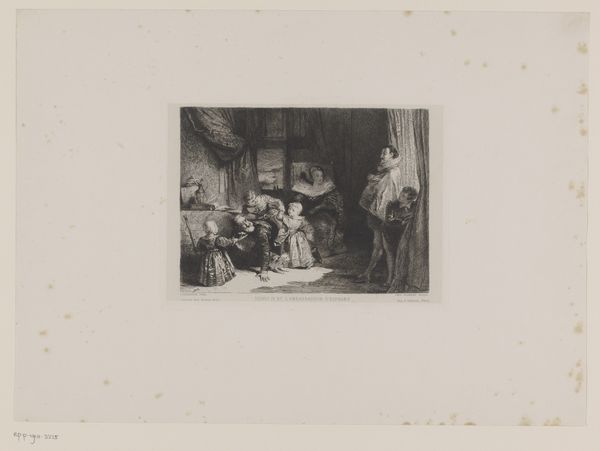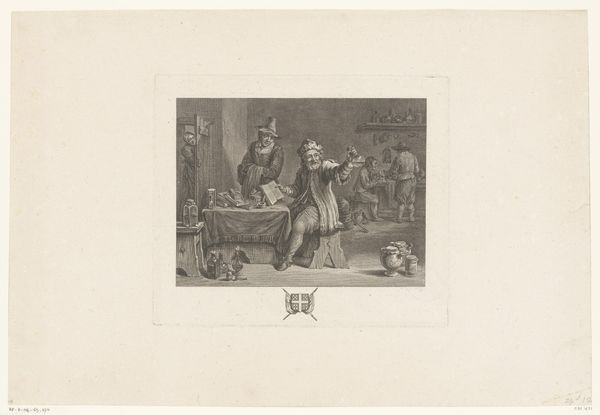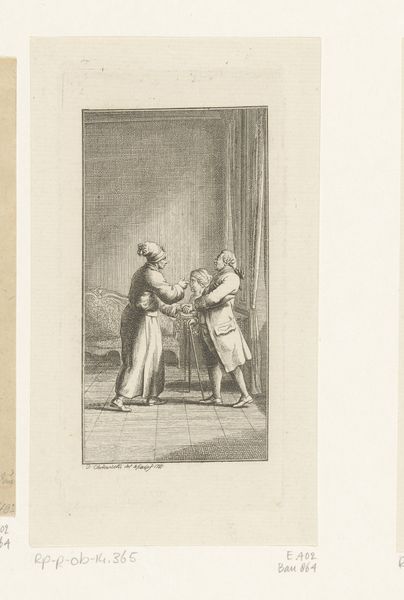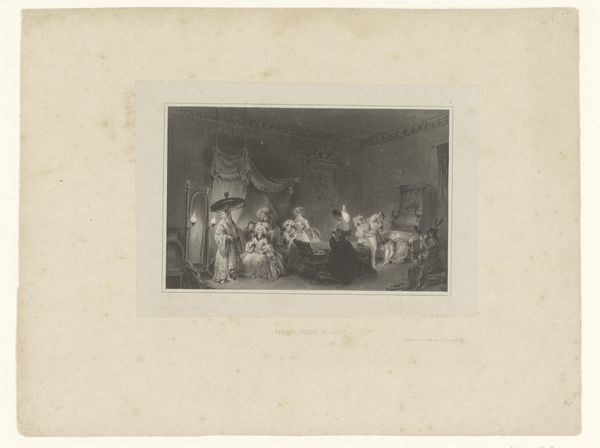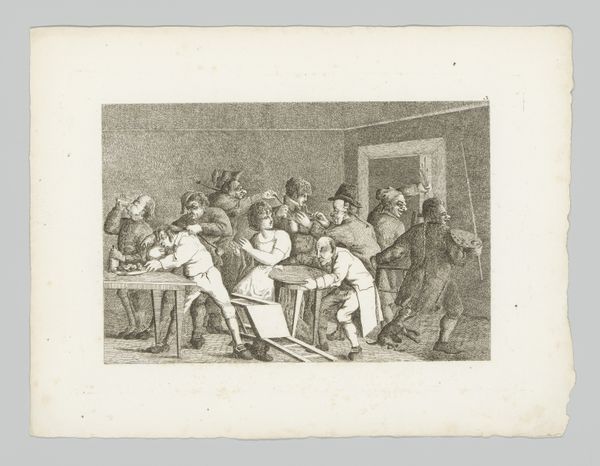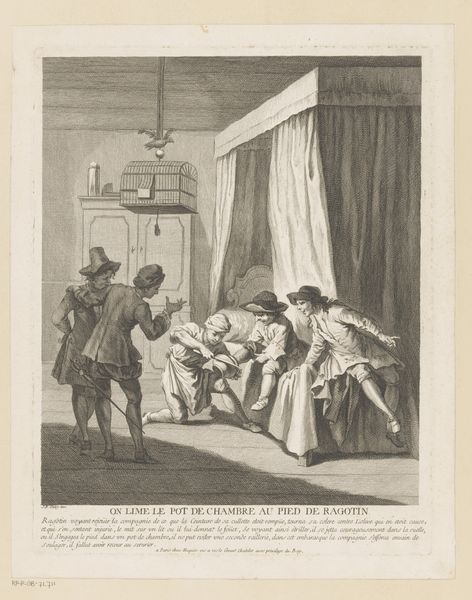
Herbergbezoekers zetten een zak geld voor de waardin op tafel 1793
0:00
0:00
Dimensions: height 180 mm, width 113 mm
Copyright: Rijks Museum: Open Domain
Editor: So, this is "Herbergbezoekers zetten een zak geld voor de waardin op tafel," or "Inn Visitors Place a Bag of Money on the Table for the Innkeeper," by Daniel Nikolaus Chodowiecki, created in 1793. It’s an engraving on paper, a print. The detail is impressive, even if the scene itself seems rather mundane. What story do you see unfolding here? Curator: I see a depiction of the material transactions that underpinned daily life. Look closely at the rendering of clothing – the roughspun fabrics, the details of worn garments, all etched with meticulous care. Chodowiecki gives importance to these items that reveal the lived experiences of everyday people. Editor: So, you're suggesting it’s not just a snapshot, but a commentary on societal structures through what people wear and do? Curator: Precisely. Consider the setting, a simple tavern interior. The visible ceiling beams indicate something about labor, but the material itself gives no more information. It provides us insight to the division of social and economic classes in 18th century society. How does the materiality of the print itself, the mass-producible nature of engraving, play into this? Editor: That's interesting. Being a print, it makes the scene accessible and distributable. Almost like a news photo for the common person, yes? It allows anyone to contemplate on this social dynamic and economic transaction… Curator: Exactly. This artwork isn’t about grand gestures, it is about how objects, clothes, labor, and the exchange of money create and shape a culture. Editor: It makes me rethink about the art of Baroque, not just as exuberant and opulent, but sometimes a lens on our relationships with everyday material culture. Curator: And how these scenes got material form, of course! I leave with a feeling that by closely analyzing these materials, we find ourselves much closer to the individuals within it, as we reflect on labor, worth, and social status.
Comments
No comments
Be the first to comment and join the conversation on the ultimate creative platform.
